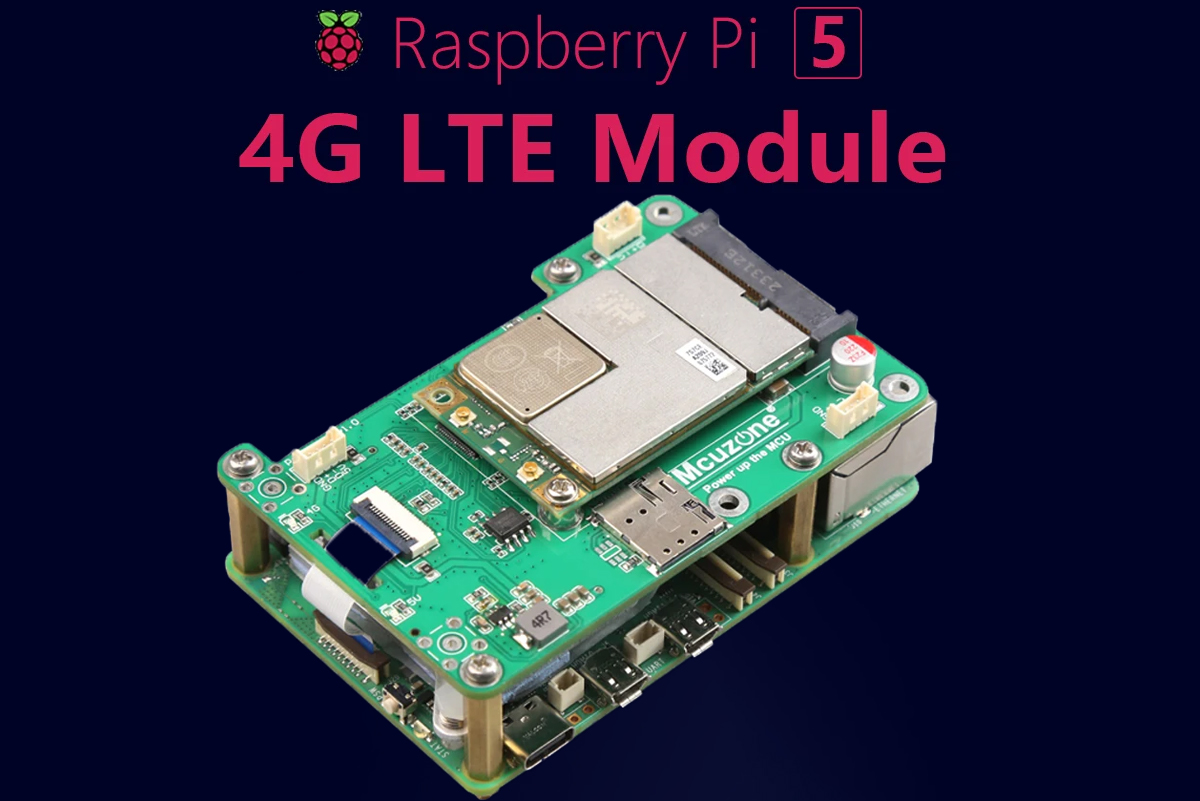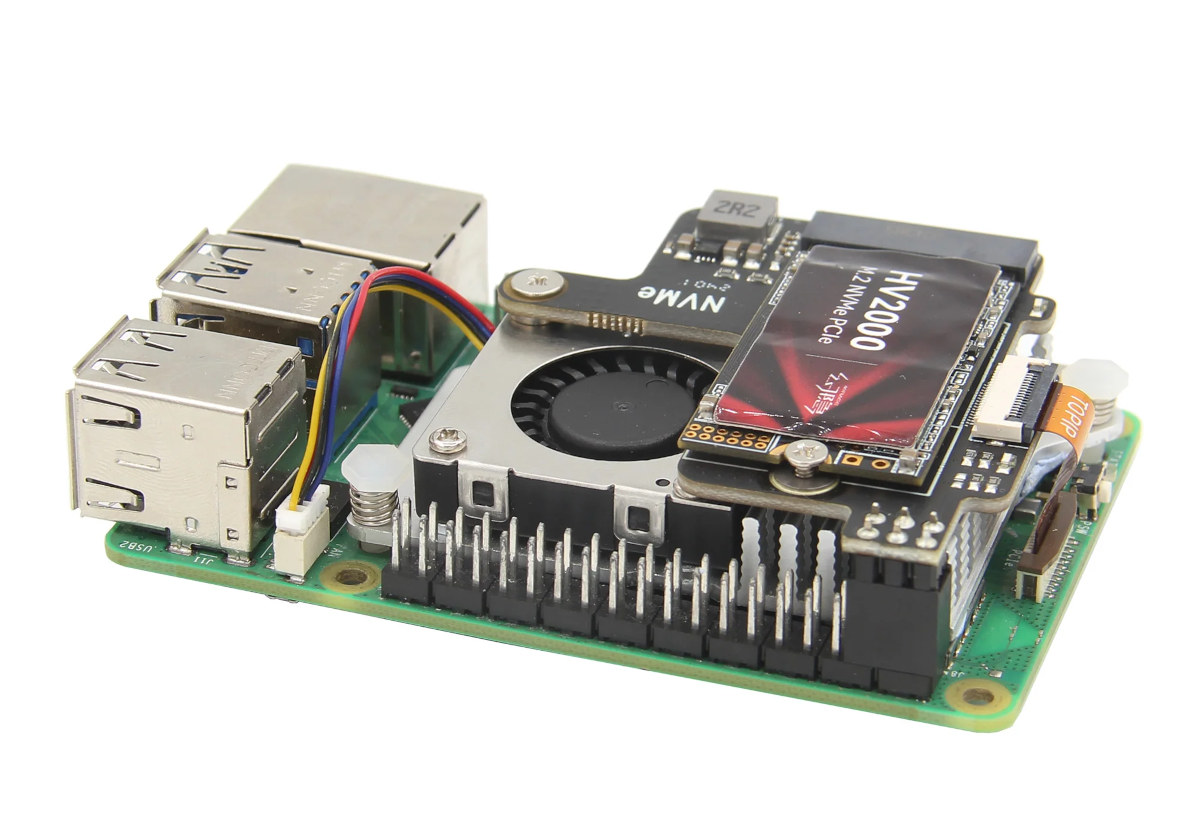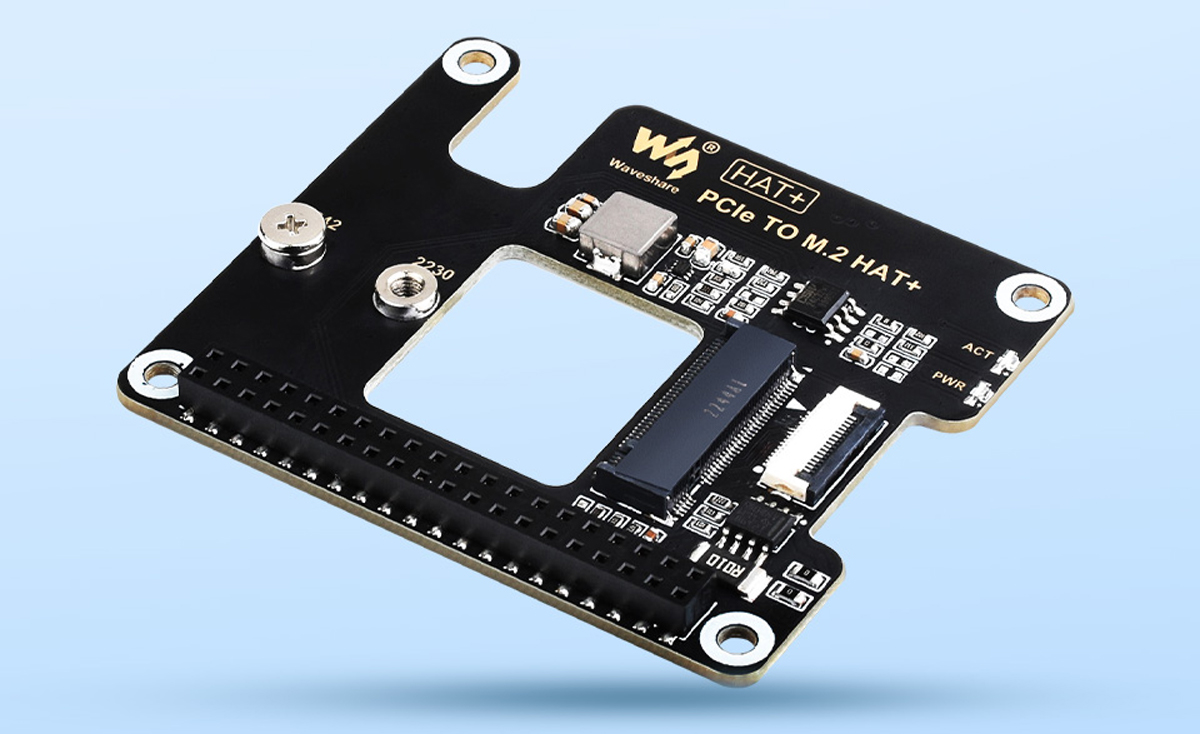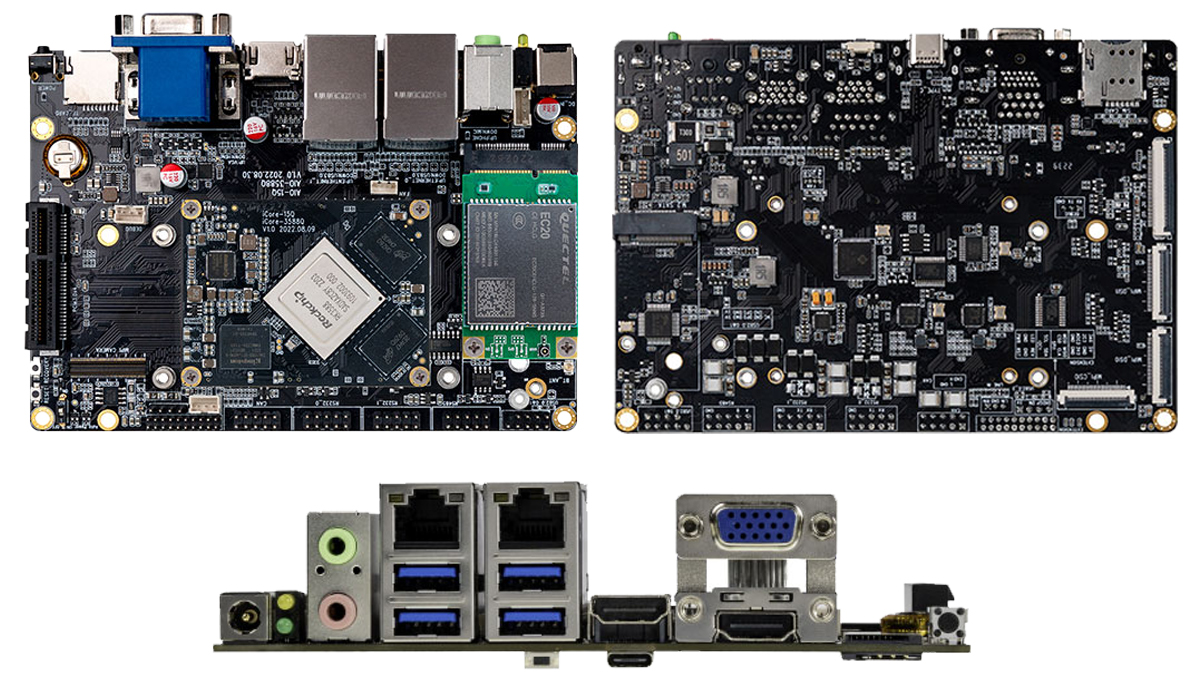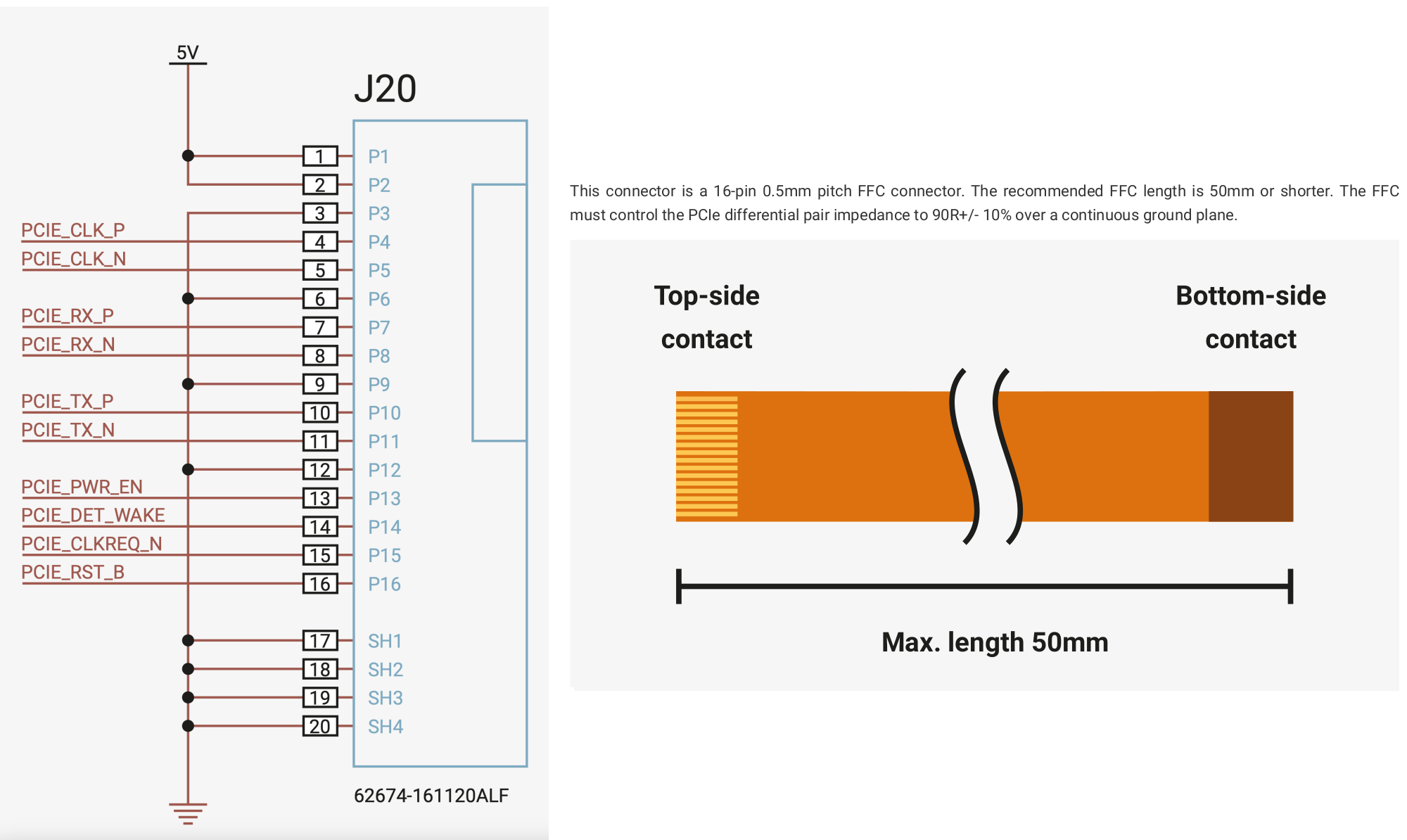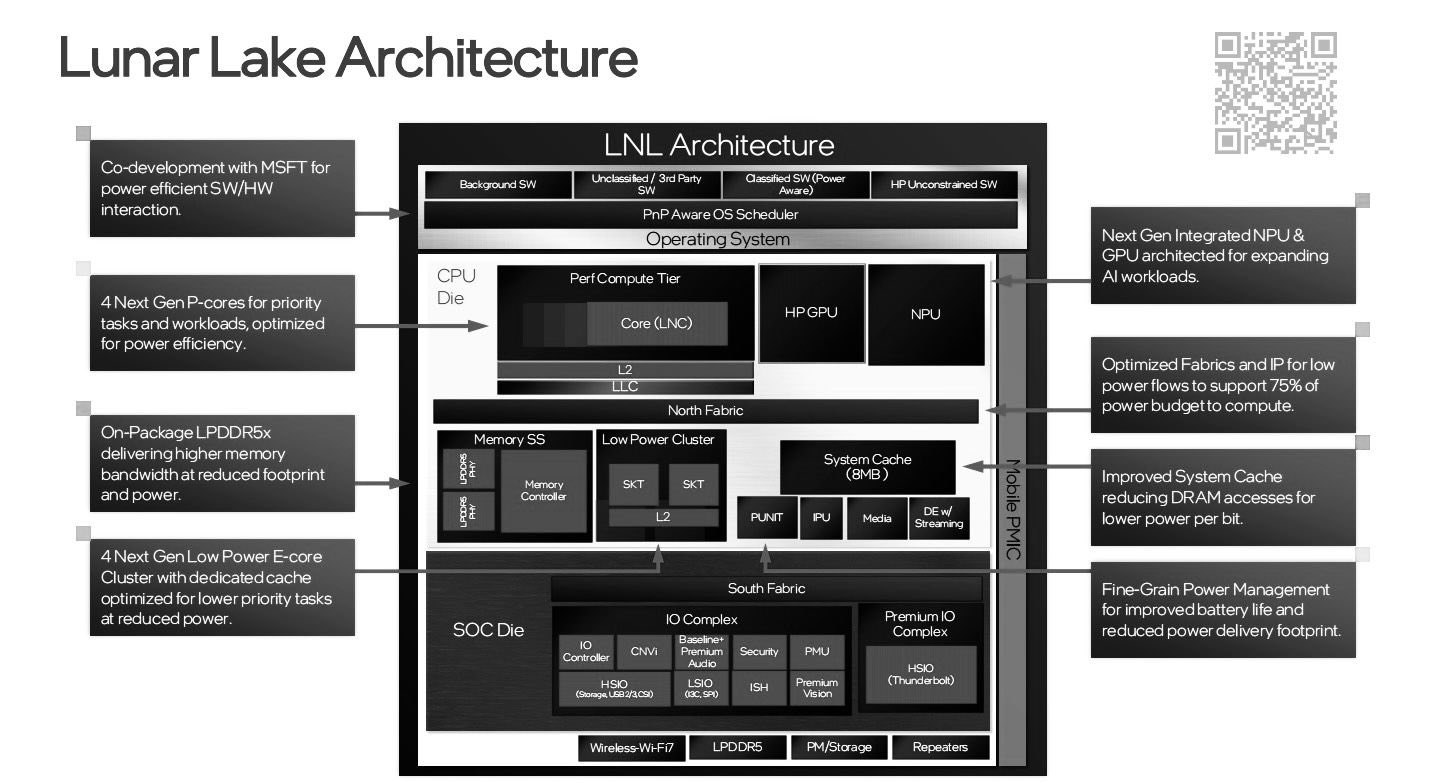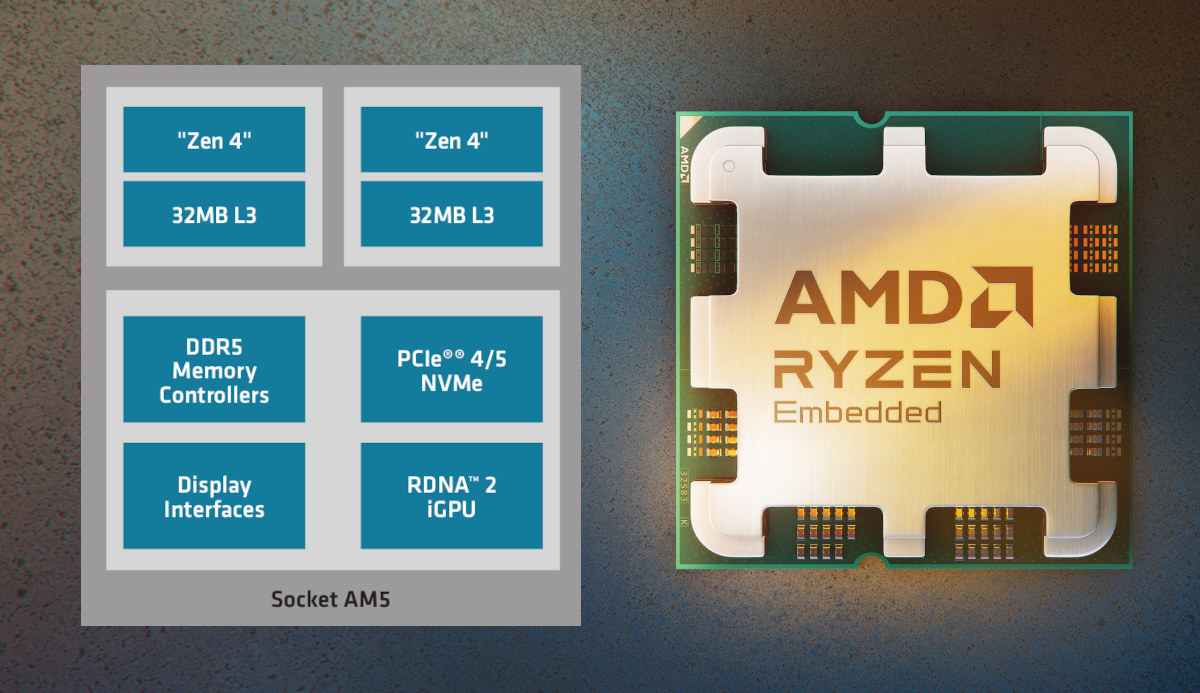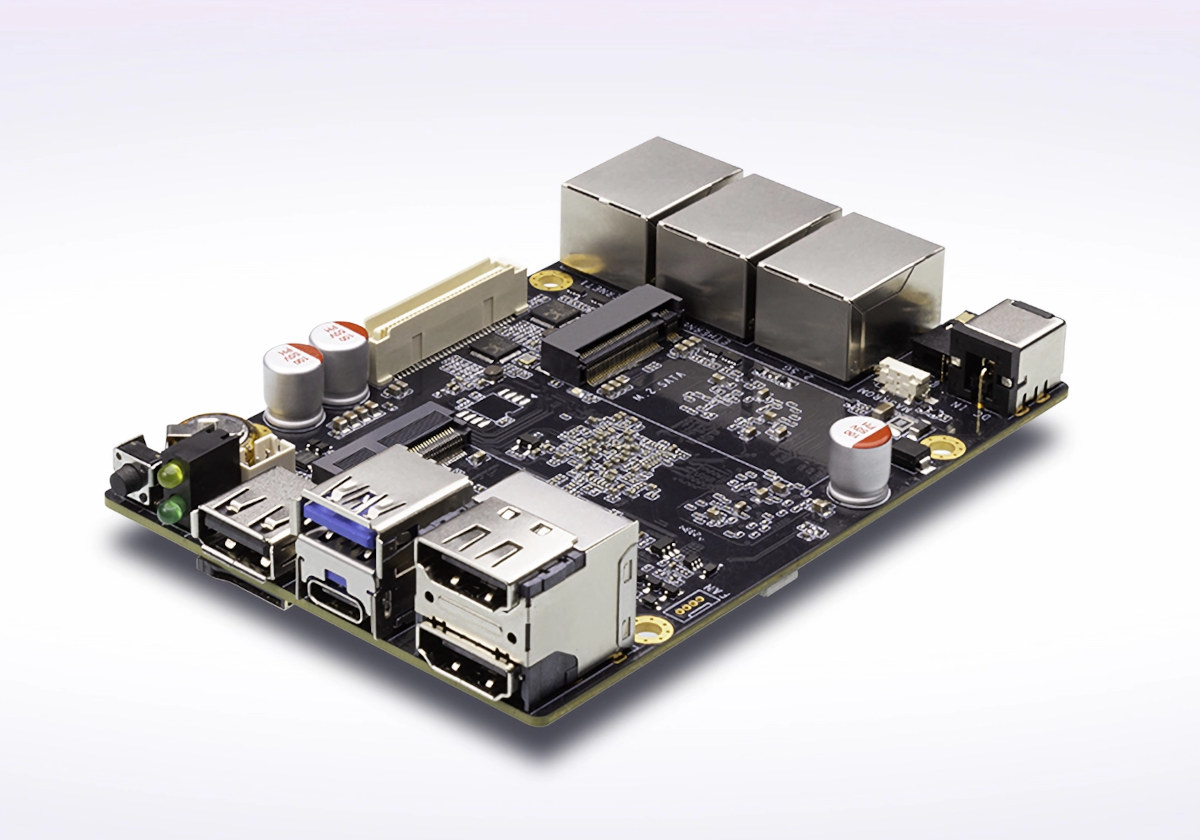Mcuzone recently announced the MP4GM, a new 4G LTE module for the Raspberry Pi 5 SBC. This module connects to the Raspberry Pi 5 via PCIe and includes three extra 1.25mm JST connectors for three additional USB 2.0 interfaces. This HAT is compatible with various 4G LTE mini PCIe modules from Mcuzone and Fibocom, providing flexible options for 4G connectivity. We have previously covered a 5G Modem Kit for the Raspberry Pi 5, but this is the first time we have found out about a 4G LTE kit designed for the Pi 5. We have also covered Mcuzone RK3308 SoM and the MDK3308-EK Evaluation Kit, designed for smart voice applications as well as a Raspberry Pi CM4 board with dual Ethernet capabilities all from MCUzone. So, feel free to check those out if you are interested in their products. Mcuzone MP4GM 4G LTE module specification: Model – MP4GM PCIe to […]
Geekworm X1003 PCIe to NVMe SSD adapter for Raspberry Pi 5 works with the active cooler or official case
The Geekworm X1003 is a well-designed PCIe to NVMe expansion board for the Raspberry Pi 5. It supports 2230 and 2242 SSDs with M.2 M-Key, does not interfere with the airflow when using the active cooler, and fits snugly within the official Pi 5 ABS case although you need to take out the fan layer from the top of the case. We previously wrote about the low-cost Waveshare PCIe to M.2 adapter, but user Rex Tang highlighted a design flaw with its 2230 screw mount affecting 2242 SSDs that have chips on both sides of the module. Then, user PANiCnz recommended the X1003 with a compact design that doesn’t have the same issue. We also covered other PCIe to NVMe expansion boards such as Pimoroni NVMe Base and PineBerry Pi’s HatDrive, so feel free to check those out if interested. Geekworm X1003 PCIe to NVMe adapter specifications: Compatible with Raspberry […]
Waveshare PCIe to M.2 adapter for Raspberry Pi 5 will only cost you $8.99
The Waveshare PCIe To M.2 adapter is an inexpensive PCIe to M.2 HAT+ module for the Raspberry Pi 5 designed for PCIe Gen2 and Gen3 SSDs. It is compatible with standard SSD sizes of 2230/2242 and features status indicator LEDs, a power monitoring chip, an EEPROM, and a cooling fan vent to keep temperatures in control during heavy use. It’s not the first Raspberry Pi 5 adapter taking NVMe SSDs (or AI accelerator), as we previously explored the PineBerry Pi’s HatDrive, suitable for 2230, 2242, and 2280 SSDs up to PCIe Gen3 speeds and the Pimoroni NVMe Base with a different design and compatible with 2230, 2242, 2260, and 2280 drives up to PCIe Gen3 speeds. A few days ago, we already covered Waveshare’s PoE HAT(F), which shares a similar form factor with Waveshare PCIe To M.2 Adapter and uses the new HAT+ standard to provide 24W of power to […]
Firefly AIO-3588Q 8K AI Board Features Octa-Core CPU and 6 TOPS NPU
Firefly has recently launched the AIO-3588Q 8K AI board powered by a powerful Rockchip RK3588 SoC, up to 32GB of RAM, 8K video encoding-decoding, Gigabit Ethernet, Wi-Fi 6, 5G/4G, and multiple display support. With all these features this board is designed to target the industrial, commercial, and automotive markets. Previously, we have covered many SBCs and SoMs designed by Firefly such as the similarly named Firefly AIO-3588SG; feel free to check those out if you’re interested. Features and specifications of the AIO-3588Q 8K AI Board: SoC – RockChip RK3588: CPU – Octa-core 64-bit (4x Cortex-A76+4x Cortex-A55), 8nm process, up to 2.4GHz. GPU – ARM Mali-G610 MP4, supports OpenGL ES3.2/OpenCL 2.2/Vulkan1.1, 450 GFLOPS. NPU – Up to 6 TOPS, supports INT4/INT8/INT16, compatible with TensorFlow/MXNet/PyTorch/Caffe. ISP – Integrated 48MP ISP with HDR & 3DNR. VPU – Supports 8K @ 60fps and 4K @ 60fps video decoding/encoding, including H.265/VP9/AVS2, and H.264 AVC/MVC. RAM […]
Raspberry Pi releases PCIe FFC connector specifications, new HAT+ standard
Raspberry Pi has released two new specifications one for the PCIe FFC connector and related cable and the other for the new Raspberry Pi HAT+ (HAT Plus) standard that’s simpler, takes into account new features in Raspberry Pi 4/5, and has fewer rules around mechanical dimensions. PCIe FFC connector specifications The Raspberry Pi 5 was announced over 2 months ago with a new PCIe FFC connector, and people may been playing around with it and even launching products such as an M.2 HAT for the Raspberry Pi 5 since then even though the pinout and specifications were not available. But Raspberry Pi has now released the specifications (PDF) for the PCIe FFC found in the Raspberry Pi 5 and likely future models as well. The 16-pin 0.5mm pitch FFC connector features a single lane PCIe interface, something we knew already, but the pinout diagram and recommendations for the FFC cable […]
Intel Lunar Lake hybrid mobile processors to integrate on-chip LPDDR5X memory (MoP)
While Intel Meteor Lake mobile processors are yet to become available, we already have a leak that provides quite a lot of details about the next-generation Lunar Lake hybrid mobile processor family (LNL MX) with supports for 8W to 30W base power designs and 16GB or 32GB on-chip LPDDR5x memory (Memory-on-Package, or MoP) to deliver higher memory bandwidth at reduced footprint and power. Developed in collaboration with Microsoft, the new Lunar Lake processor will come with four P-cores and four low-power E-cores, a new generation NPU and GPU architecture for AI workloads, and improved power management for lower power consumption (40% scenario power reduction) and improved battery life. Four SKUs are currently planned with either 16GB or 32GB dual-channel LPDDR5X memory: Core 7 MS3 (+ MoP) – Octa-core “12M” processor with 4x P-cores, 4x E-Cores, 8-core Xe2-LPG GPU, and 6-tile (12K9M) NPU Core 5 MS1 (+MoP) – Octa-core “8M” processor […]
AMD Ryzen Embedded 7000 Zen 4 SoC integrates Radeon RDNA 2 graphics, up to 28 lanes of PCIe 5 connectivity
AMD Ryzen Embedded 7000 Series is a new “Zen 4” processor with integrated Radeon RDNA 2 graphics designed for high-performance embedded systems targetting industrial automation, machine vision, robotics, and edge servers. The last two Ryzen Embedded families from AMD, namely the Ryzen Embedded V3000 and Ryzen Embedded 5000, mostly targeted headless networking and storage applications since the processors lacked any 3D GPU. But the new Ryzen Embedded 7000 processors bring back graphics with a Radeon RDNA 2 GPU clocked at up to 2.2 GHz and also come with up to 12 Zen4 cores clocked at up to 5.4 GHz, and feature up to 28 lanes of PCIe 5 connectivity. Ryzen Embedded 7000 Series specifications: CPU – Up to 12-core/24-thread “Zen 4” processor GPU – Radeon RDNA 2 graphics 1WGP @ 2.2GHz max with support for AV1/VP9 decode, H.264/HEVC decode/cncode Cache – Up to 1MB L2 cache/Core, up to 32MB L3 […]
Firefly ROC-RK3588-RT Rockchip RK3588(J) SBC comes with three 2.5Gbps/gigabit Ethernet ports
Firefly ROC-RK3588-RT is a Rockchip RK3588(J) SBC suitable for networking applications such as routers and firewalls thanks to one 2.5GbE port and two gigabit Ethernet ports and available in both commercial and industrial temperature grades. But the board is likely to be used for more complex workloads since it also comes with three video output interfaces (2x HDMI and USB-C DisplayPort), M.2 sockets for a SATA or NVMe SSD, a WiFi 6/Bluetooth 5.2 module, a 6 TOPS NPU embedded in the Rockchip processor, and a (non-standard) expansion connector with PCIe Gen 3 and other interfaces. Firefly ROC-RK3588-RT specifications: SoC (one or the other) Rockchip RK3588 octa-core processor with CPU – 4x Cortex‑A76 cores @ up to 2.4 GHz, 4x Cortex‑A55 core @ 1.8 GHz GPU – Arm Mali-G610 MP4 “Odin” GPU @ 1.0 GHz Video decoder – 8Kp60 H.265, VP9, AVS2, 8Kp30 H.264 AVC/MVC, 4Kp60 AV1, 1080p60 MPEG-2/-1, VC-1, VP8 […]


